-
Posts
1304 -
Joined
-
Last visited
-
Days Won
12
Content Type
Profiles
Forums
Events
Blogs
Posts posted by Rauf
-
-
Crazy results! Congrats!
-
Sick CPUs! Awesome scores
-
I don't understand why some people expect everything to be free and/or nonprofit. This is not a charity organization. I think the competitive part of hwbot might benefit from fees in more than one area.
-
Are you using a "broadwell-e compatible XTU"
just a thought, but hey, saves me wasting time with mem timings for XTU
Yes, latest version, 6.1.2.11 I think.
-
Thanks for your comments!
@svictorcc
I don't have any of the older versions of RVE to test, so I don't know how they are. But try it!
@XA
From my tests tertiaries were mostly as tight as they could go with auto settings. The few I managed to tighten did little to nothing performance wise. But I didn't spend too much time on them...maybe you found something better

-
It's a limit in bios. Xpower had the same in some bioses. Try another bios.
-
Thanks, have been thinking about how to solve it for benchmarks which require lots of memory for a time. But never really needed it. Now I won't have to research it!
-
Damn
-
man cant believe I killed my golden 6500mhz 6100 right before this came around. I am so upset with myself, that chip still looks like one of the fastest around, goodbye, what a horrible feeling that is.
Is anyone going to try a power board mod. If nobody else does I wouldnt but if some people do then I would want to try. But might not even help with this gpu.
Really, didn't know that. Too bad, it really was a one of a kind. But I saw you ran some crazy Vcore for i3, they are not as tough as 6700K

And now the cpu stage will be a little tighter I guess. Quite a few cpus out there around 6350MHz.
I will not use powerboard, don't have one, don't know how to use one

-
I say more of this in the future. If vendors don't hold xoc competitions, let's do it ourselves. Get the sponsors we can, but the real prize will be the entry fee divided between the winners.
-
Rauf’s guide to memory overclocking on ASUS ROG Rampage V Edition 10
Version: 2016-09-16
Here’s the guide in pdf format: Link
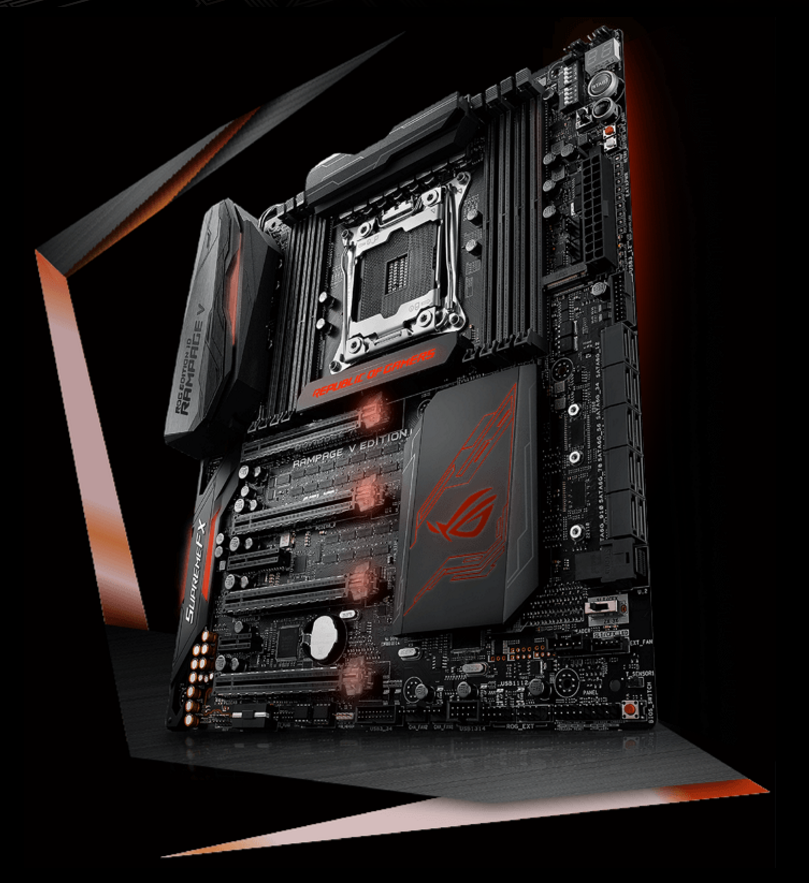
Introduction
In the early days of Haswell-E, memory OC could be a real pain in the ass. But fear no more, with improved boards, bioses and ICs, memory OC is now easy. Memory overclocks higher and tighter and is much more fun and rewarding. I will be using the ASUS ROG Rampage V Edition 10 paired with 2x8GB G.Skill B-die retail memory matched with 2x8GB Galax wazza memory (yes you can mix brands just fine). The CPU of choice (my only X99 CPU) will be a 6950X.
One of the best parts of BW-E memory overclock is that since you cannot reach anywhere near the frequencies of Skylake, you don’t need to bin memory that hard. Most B-die sticks will do, even your Skylake rejects should be fine.
Software
In this guide I will mostly be using Geekbench v3 for testing memory performance. The reason is that I rather like the benchmark because it’s fast, consistent and it scales very well with memory speed and timings. Also, the subtest Dijkstra is pretty hard on memory, so if it can pass that it will easily be able to do all other relevant benchmarks as well. Bear in mind that your memory score in Geekbench scales with CPU speed, so keep your CPU and cache close to your baseline speeds when you test. I used 4000 MHz core and 3500 MHz cache. I have also noticed that while your memory score might increase, you can actually get worse overall score when pushing mem OC. This is likely due to Dijkstra being the hardest subtest to pass and if it barely passes you can get a low score here which affects your overall score. Dijkstra won’t affect your mem score since is not actually a mem subtest. I wouldn’t look too much on the overall score when testing mem OC, so concentrate solely on memory score. You will have more headroom for memory OC when you’ve got your CPU on LN2 anyway. And all other benchmarks will be fine at that speed also. OS used for tests was Win 7 SP1 x64.
Apart from Geekbench, I will also be using the ASUS MemTweakIt tool. It is a great little tool that gets too little attention. It has two uses, first is to check your timings, second is to actually adjust timings in OS. Most timings work surprisingly well when adjusting in OS so this tool will save you a lot of time. You can even adjust your main timings, and even CL, but keep in mind that your RTLs and IOLs won’t change with it so it will not be “true†CL 10 for example. However there is still a gain going from CL 11 to CL 10 in OS. Remember to click "Apply" when changing timings as "OK" actually doesn’t save your changes and just closes the window.
I also did a few test with XTU and SPI 32M just to check consistency. The XTU tests surprised me a bit, but more on that later.
What to aim for?
You will max out on frequency pretty fast compared to Skylake, due to IMC or platform limit. Max frequency will be somewhere around 1700-1800 MHz. So what you need to do is tighten the timings, A LOT! Don’t be afraid to enter numbers you wouldn’t even dream of on Skylake, as you will see here you can bench at some pretty amazing timings.
The memory I used in these tests are all capable of 2000+ 12-11-11 with wazza on Skylake, so they are really good. Still, I haven’t been able to get higher frequency than some reached at the world tour event at Computex with random Zadak memory. What I’m getting at is that once you reach your limit, it is not likely to be your memory. If you’re not happy with your mem OC, start binning your 6950Xs for IMC

Basic settings
As your memory most likely won’t be the limiting factor you don’t need to worry about which order you put your sticks in. Just plug them in and start benching. Set 1.8 or so Vdimm, leave everything else auto. I have not found that raising SA or IO helps at all. Disable the usual SVID etc. Set max current capabilities etc (don’t really know if it helps but it doesn’t hurt at least).
Use 125 strap, it is the most efficient one. And of course, don’t forget maxmem! We’re using Bdies here!
Timings
See the picture below for a good set of timings.
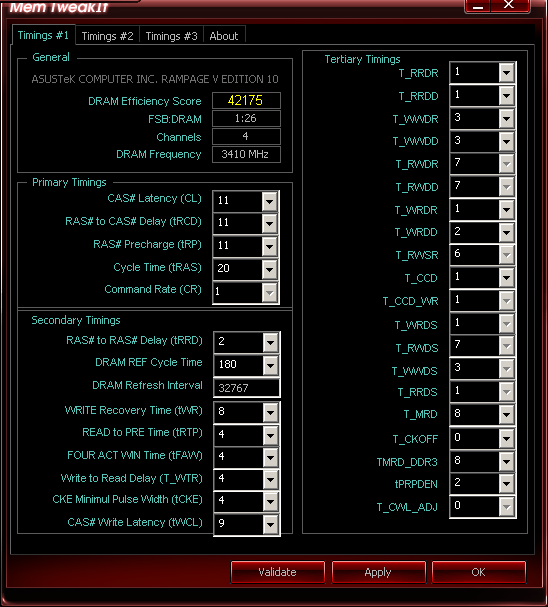
Here they are in dial-in form for your convenience

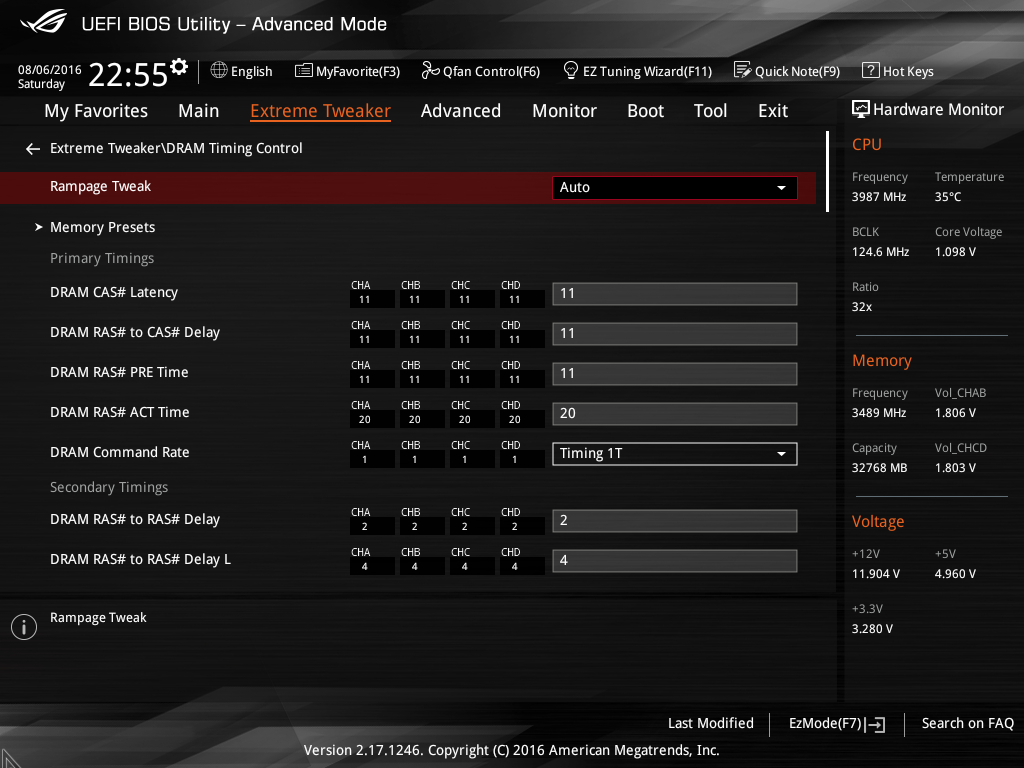

These are the best timings I have been able to find, I don’t share the decent ones and keep the really good ones for myself. But try it yourself, you might find even better ones. Note that I could actually pass Geekbench with tWR 4 and tRTP 2 sometimes, but anything below 8/4 on those would not be stable enough to pass Geekbench consistently. I didn’t touch the thirds too much, basically they weren’t really possible to tighten down that much from auto, and they did little for performance.
However, what you actually need to focus on are your RTLs, as you will see they will make the biggest difference. Best for me was 51-51-51-51. 51-49-51-49 is much worse at same speed. Unfortunately I wasn’t able to successfully set any RTLs/IOLs manually, not even a full dial in with the same values as auto gives. So you need to try to boot at different speeds and figure out how to get your best RTLs with your best mem frequency. For me I needed to boot at the 3500 mem strap and then reduce blck in OS or set blck lower than 125 in bios.
Maxing out
You will be maxing out frequency, timings and actually most importantly RTLs. So you will need to test your best combination. I started out by setting 3333 MHz frequency and then went as tight as I could on timings. After that I started to increase frequency until I could go no further. Note that you will run into a wall of around 130 bclk, maybe due to DMI/PEG freq I don’t know really. But if you need to go higher you have to set a higher mem multiplier. Next one is 3500 MHz, which might be pushing it for your setup, at least for Geekbench. My setup maxed out at 1745 MHz C11-11-11, so I needed to downclock in OS or set lower bclk in bios. Do note that Geekbench will complain about internal timer error if you do too much bclk adjustments in OS, even if you use Win 7. You can do ~1.5 MHz adjustments before Geekbench will give you an error and refuse to present a score. Keep an eye on your RTLs as they will go from 51-49-51-49 at 3333 MHZ to 51-51-49-51 at some point when you boot at higher frequency. When you boot at around 1720 MHz you will get 51-51-51-51, which was best for me. Of course this might vary a little from setup to setup and maybe benchmark to benchmark.
Loosening timings shouldn’t get you much frequency wise but you can always try and see what performs best if it scales with looser timings. But in general I would in fact recommend the opposite, to find your max speed at C11-11-11, and then try C11-10-10 as you most likely will be able to do that if C11-11-11 works. If you can’t boot it, set it in windows, it will work fine with MemTweakIt. You can also change to C10-10-10 and see if you can do that, it is not impossible, but will be hard when you are close to your frequency limit. This will only work from within OS though as setting it in bios will get you too tight on RTLs.
Results
Now to the fun part, results:
Baseline score, 1667 MHz C11-11-11-20 220 1T, auto subtimings:

"Skylake subs", 1667 MHz C11-11-11-20 220 1T: About 275 points increase in memory score.
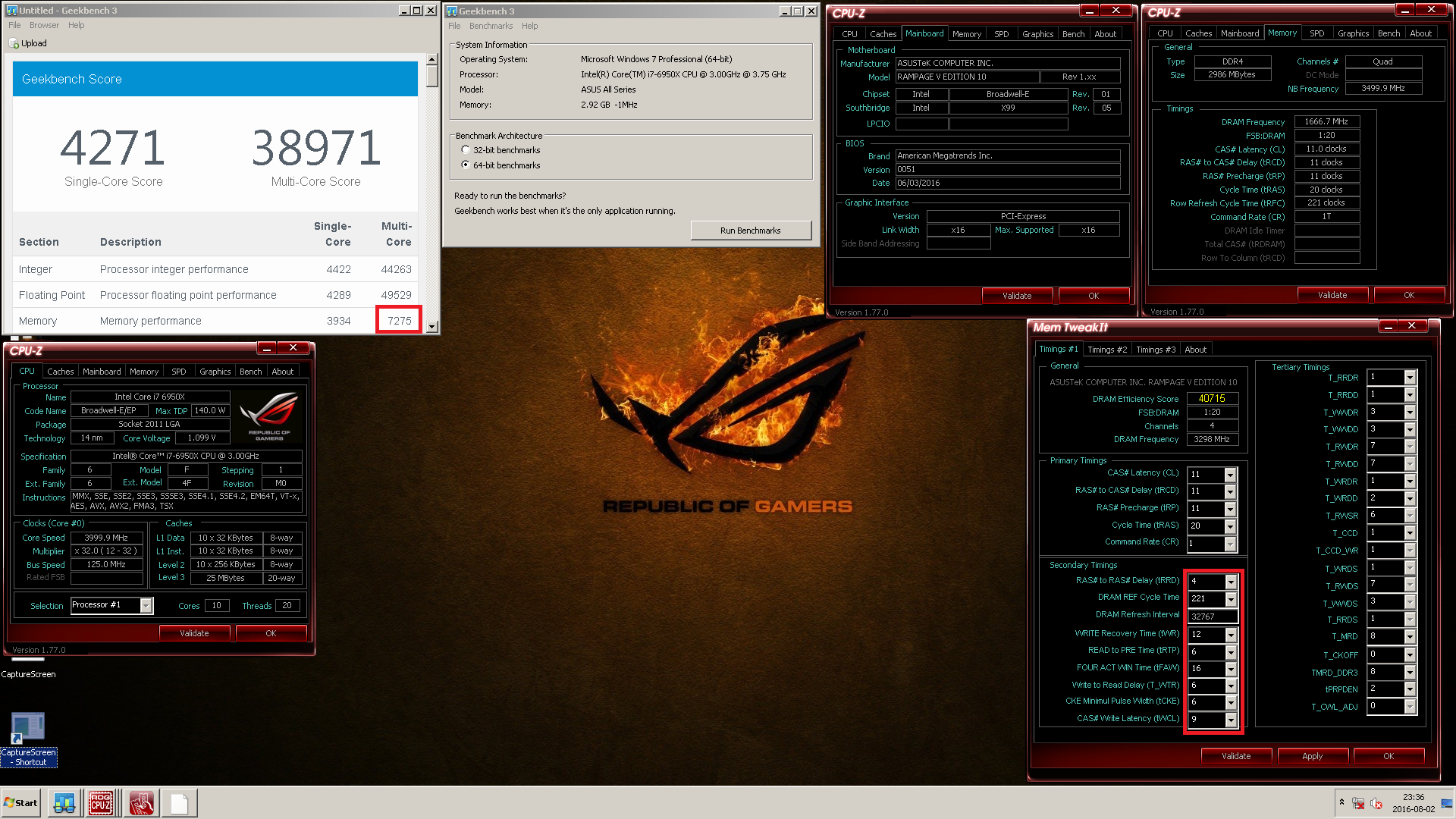
Optimal subs, 1667 MHz C11-11-11-20 180 1T: 350+ points increase in memory score from baseline. Overall score has increased by almost 600 points.

Max mem frequency of 1745 MHz: Almost 500 points increase in memory score from baseline. Overall score is ~900 points above baseline, and this is with slightly lower CPU speed. This was the highest frequency I could run Geekbench at. Note that Geekbench is quite hard on memory, in other benchmarks such as XTU and 3DMark physics you can push your memory a fair bit higher.

1711 MHz, RTL 51-49-51-49: For testing impact of RTLs. Next two screens shows the same mem frequency, same subs, the only difference is in the RTLs.

1711 MHz, RTL 51-51-51-51: +100 points from RTL only
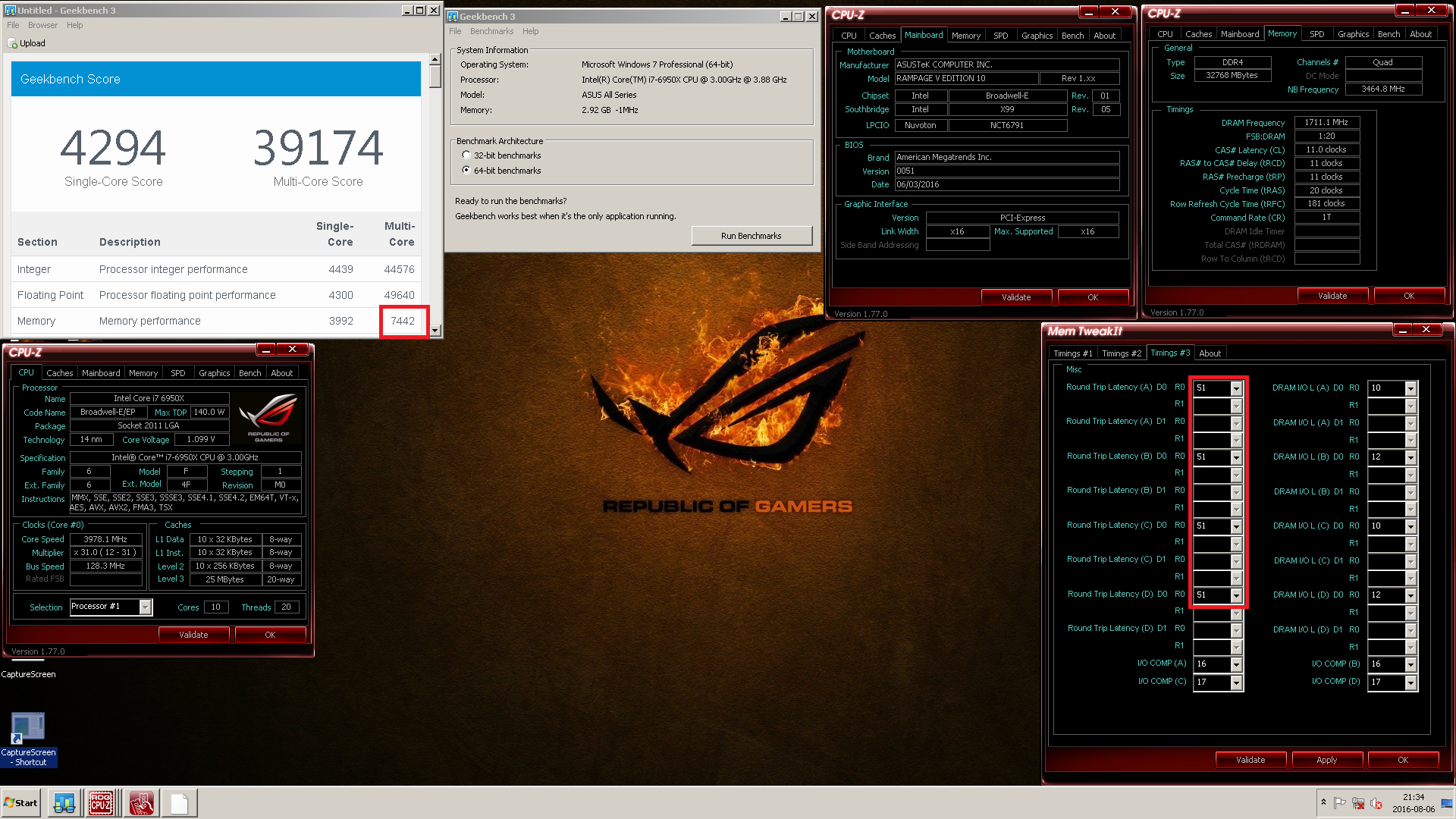
1625 MHz C10-10-10-20 180 1T, RTL 49-47-49-47: Lower score, just for reference

Why no XTU?
You may wonder why there haven’t been any XTU tests, they are after all kind of standard when focusing on memory performance. Well, here’s why:
1667 MHz C11-11-11-20 220 1T, auto subtimings:

1750 MHz C11-11-11-20 180 1T, optimal subtimings:
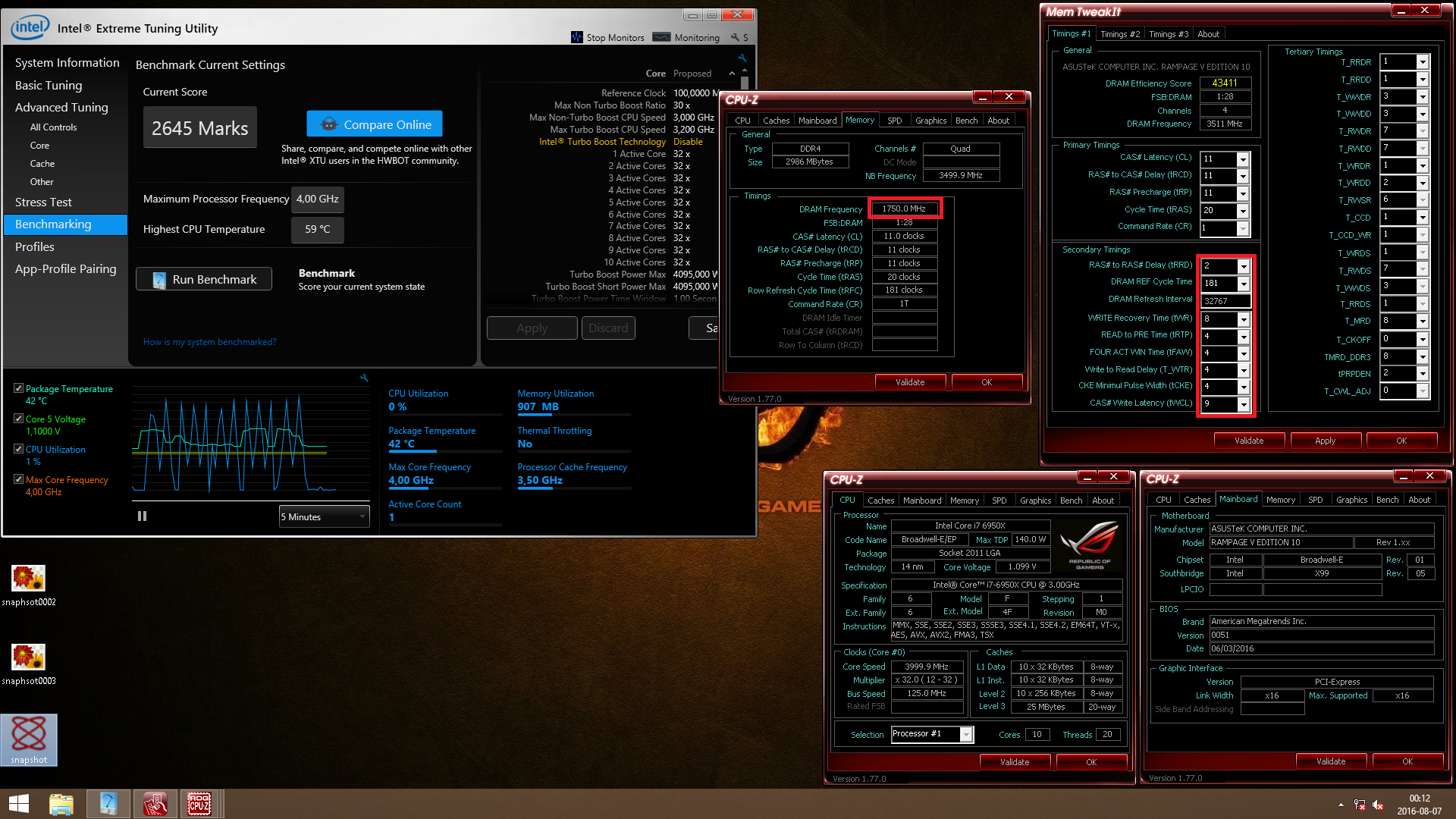
1750 MHz C10-10-10-20 180 1T, optimal subtimings (not "true" C10, changed in windows so RTL isn’t correct for C10):

Just some other XTU-tests for "fun"

1625 MHz C10-10-10-20 180 1T ("true" RTL):

1625 MHz C9-9-9-20 180 1T (not "true" RTL):
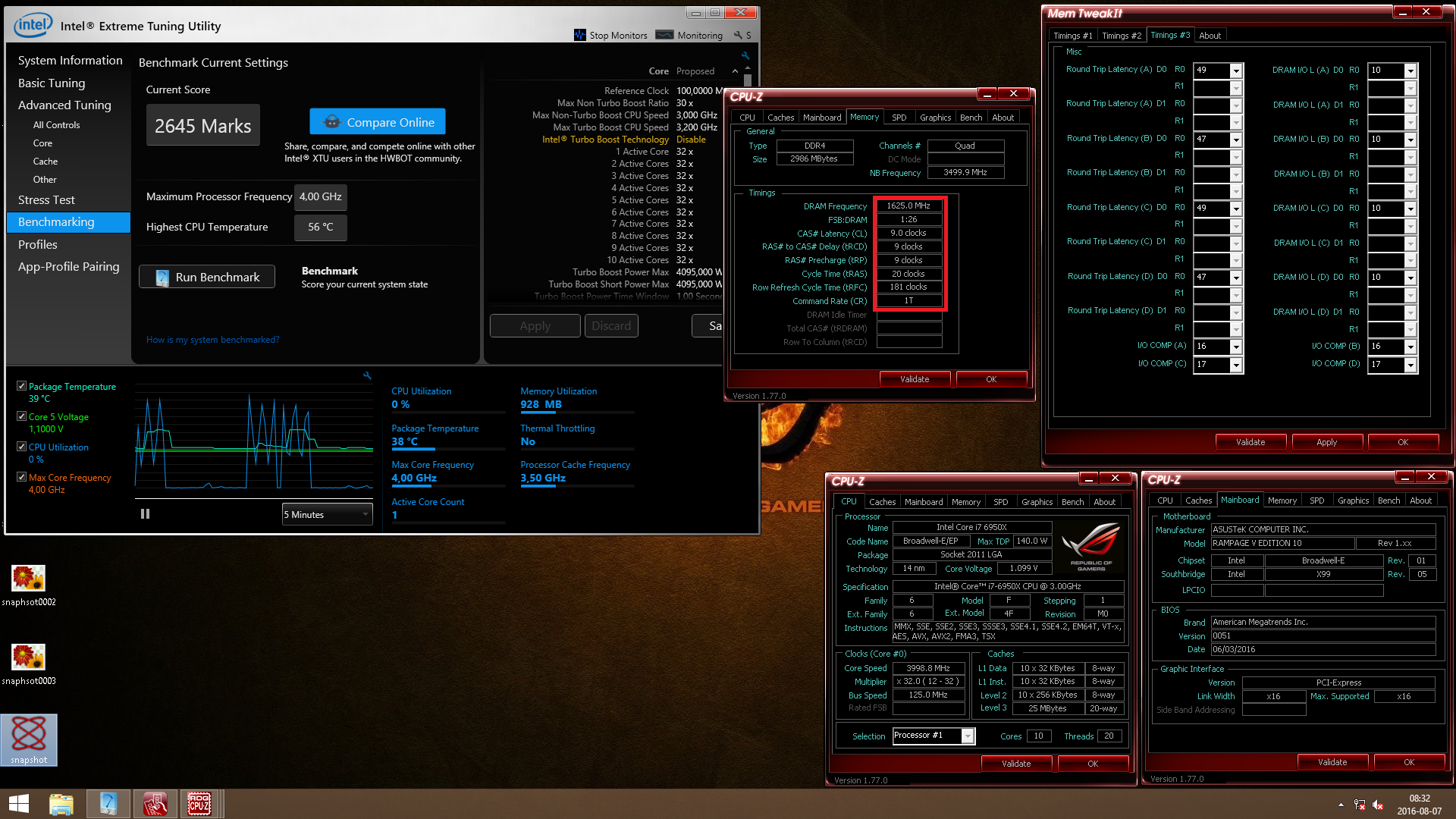
Conclusion, XTU is bunnyextraction benchmark

Note that one of the tests was run with both higher frequency and tighter timings (C10-10-10) than what I could do in Geekbench. I actually haven’t tested max frequency in XTU because of the non-existent scaling.
SPI 32M
Because XTU was so…should I say, consistent… I ran some 32M to verify that Geekbench wasn’t just playing me tricks on memory performance.
1667 MHz C11-11-11-20 180 1T, optimal subtimings:

1750 MHz C11-11-11-20 180 1T, optimal subtimings:
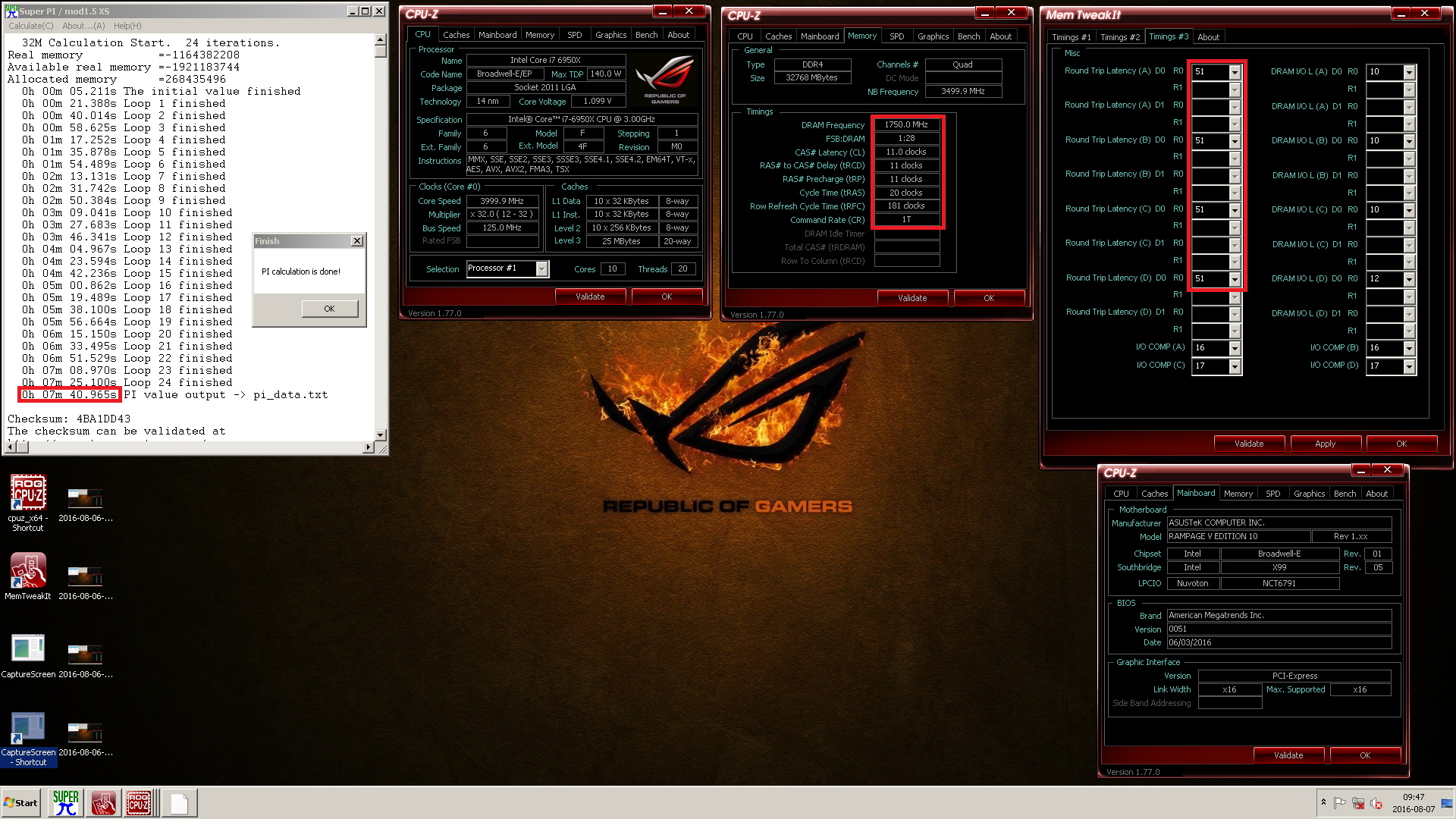
That’s all folks, thanks for reading!
Written by:
Tobias "Rauf" Bergström
-
 1
1
-
-
"Best to use it", or is it mandatory? It's an important question as results likely will differ a bit from earlier versions. I don't want to be beaten by one with version 1.1 if I run latest...
-
Confirmation as soon as possible on Fire strike version would be much appreciated!
-
Looking for a Kingpin Gemini pot with fast base in good condition. EU preferable. If you have one, tell me what you want for it including shipping to Sweden.
-
To show your skill you dont need on the top of league. Did you see many of the overclockers legend not in top rank? Thats normal

Having a ranking that no one cares about is not a positive thing in my book...
-
Which versions of Fire Strike and GPU-PI are ok?
-
@Rauf,
Woops, thanks.
y-cruncher will be replaced by 3DMark11 Physics:
a Core i3 (Skylake), Pentium (Skylake), Celeron (Skylake) processor
Only use latest version: v1.0.132
SystemInfo Version 4.48 (enabled and running)
Valid link mandatory
A verification screenshot is required
Download official wallpaper: here
a Radeon RX 460 videocard
Screenshot: CPUZ (CPU, Memory, Motherboard), GPUZ, 3DM11 Physics score.
No worries, I only charge 52.50€ for beta testing

-
Was it intended for the y-cruncher to be a low clock stage? I just tested the different calculation methods and the ones with avx2 are much faster. Even high clocks on ln2 won't help...
-
I have payed already
 Nothing strange that you pay to enter a contest, like in every other sport when there is a decent prize pool.
Nothing strange that you pay to enter a contest, like in every other sport when there is a decent prize pool.But you probably have to change the rules. Retail/commercial BIOS only? That would make elmors and the stilts work useless. Also no XOC bioses for motherboards... Rule should be "publicly available" or something like that...
-
Great! I have ordered the strix OC since the non OC is not available here. Will test.
Is the stilts exe a run once or we need to run it every reboot?
-
Come on, drop the accusations... This is of course not any fault in either of the two MB's. You can run at correct speed with both and you can run with incorrect speed with both. The key aspect is that there is no way to verify CPU-speed. But you can't verify 70% of the benchmarks here anyway. So why is this more of a problem here than anywhere else? I consider running at max bclk to be able to take a legit screenshot to be an optimization. Especially if you look at the rules for the low clock competition:
"CPU Frequency in CPUZ must be lower than 5003 MHz"
Consider the alternative. If the rules were: "max fluctuating CPU-freq is 5003 or less", how can you verify that? Should the users wait to catch the highest fluctuating bclk?
-
Thanks!
Works for both normal Strix and Strix OC?
-
-
Ok, actually read through the posts here and as always some major misconceptions.
ES is not by definition "superior" to retail. ES CPUs are identical to retail ones as performance goes.
ES is still ES even if you win it, buy it, get it for free. If you buy an ES CPU from ebay, it's still ES. Even if you buy an ES cpu from Newegg, they/you have been tricked. It's still ES...
ES may or may not have serial number etc. A sticker cannot decide if a piece of hw is ES or not.
Limited editions are still retail if you buy them from a store and sale is open to the public. A product sells out, tough luck.
A straight from factory buy will always be ES if the product is never released to the public. No matter how many buy it. If I were to call Gigabyte and say I'll buy one board for 1 million dollars, would that make it retail? What difference does it make if 10 people call, or 20, or 30... It's still a privileged group found in an obscure forum. If a group of people from Australia were to make a group order, open to everyone on a local Australian forum would it be considered retail? If it were to happen from a small Swedish forum, all written in Swedish?
I think the main concern about ES is that people shouldn't feel cheated. People will feel cheated if unreleased hw is used here, period. They might feel a little less cheated if unreleased hw takes you to the separate Elite ranking. But people still feel cheated by it...
-
 1
1
-
 1
1
-


RealBench Challenge 2016 - Challenge II Discussion
in HWBOT Competitions
Posted
4200.00 should be ok for x99. Doesn't really matter what you decide though